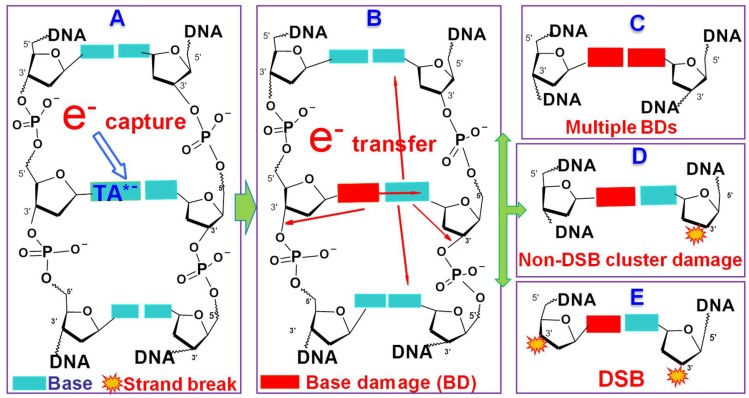Scheme 1.
Diagram of the reaction pathways for a single LEE to produce all possible types double-lesion cluster DNA damage. The electron (e-) is initially captured by a base, forming a core-excited transient anion (TA) (A). An electron autodetaches from the base anion, leaving the base in a dissociative state (B). The base is damaged and the additional electron transfers to other sites where DEA occurs (B). Transfer to the opposite base can result in two adjacent BDs (C), whereas transfer to the phosphate unit in the same or opposite strand, can cause a strand break via C−O bond breakage (SSB via DEA + BD) (D) or a DSB, if the BD on the left strand is converted to a strand break (E). Electron hopping between bases can create a BD or SSB farther away from the initial electron capture site (Copyright 2019 American Chemical society [67]).

